Mozambique
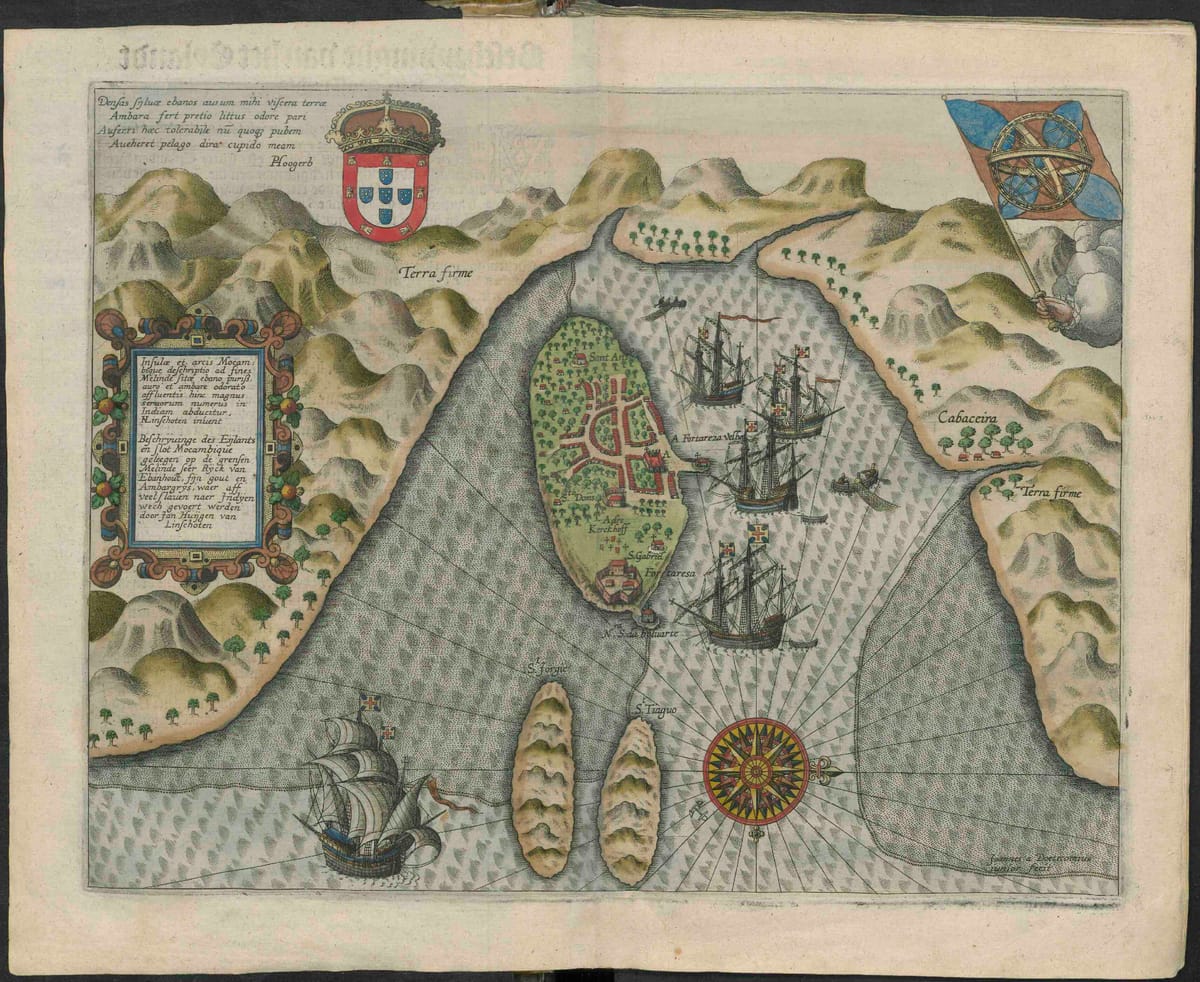
Mozambique is the name of a country on the southeastern coast of the African continent. Mozambique Island is a tiny island in Northern Mozambique, between Mozambique channel and Mozuril Bay.

Mozambique Island is situated 4 km from the mainland coast. Today, it is connected to the mainland by a bridge.
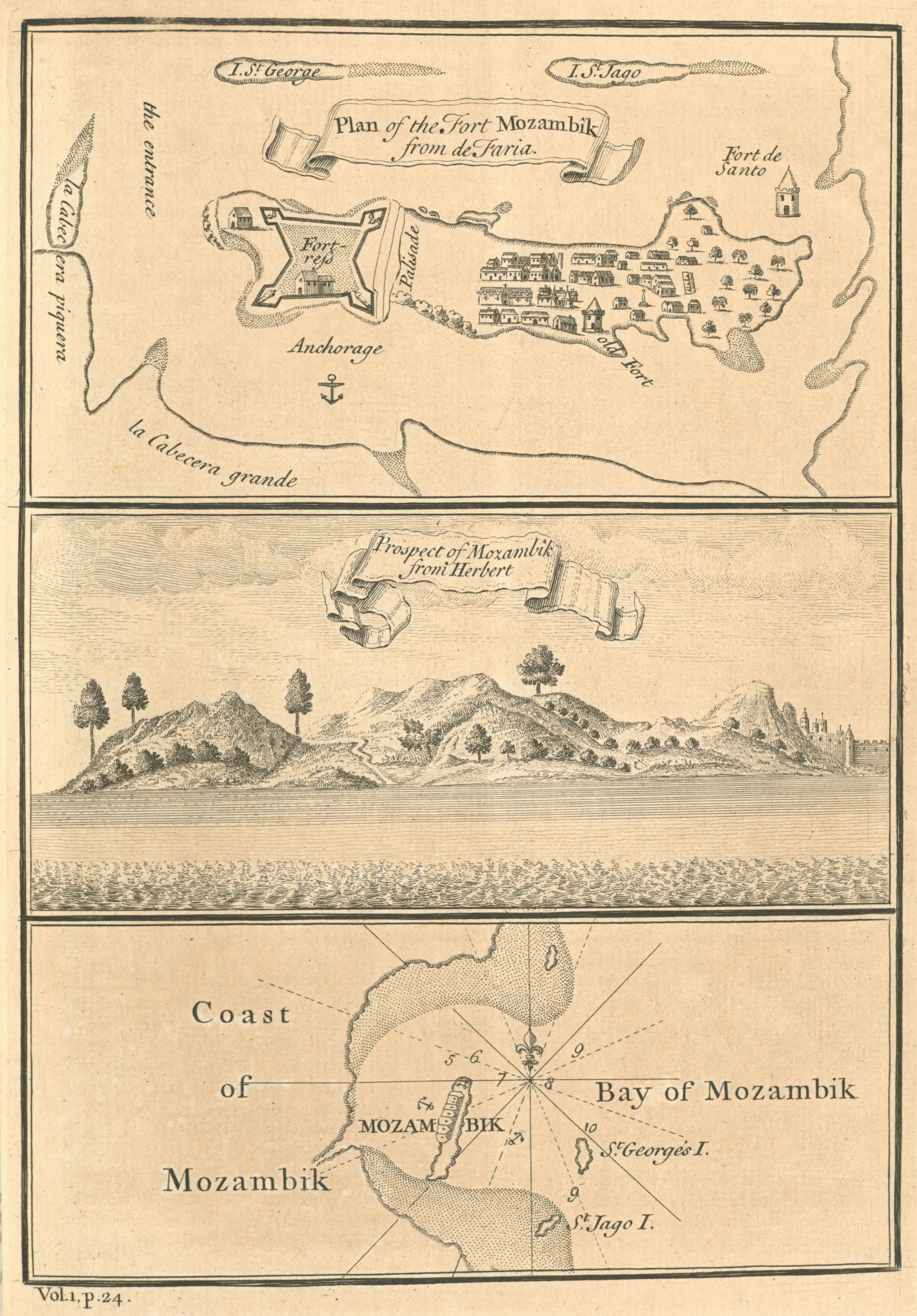
By 1540, Mozambique had become the most important naval base for the carreira da India after Goa, and the subsequent decades saw the town transformed into one of the two or three most important captaincies of the Estado da India. Early in the seventeenth century, it was especially targeted by the Dutch, who tried three times between 1604 and 1608 to capture it. During those attempts, the city was largely destroyed and had to be rebuilt. Surprisingly, the local Swahili people sided with the Portuguese against the Dutch.
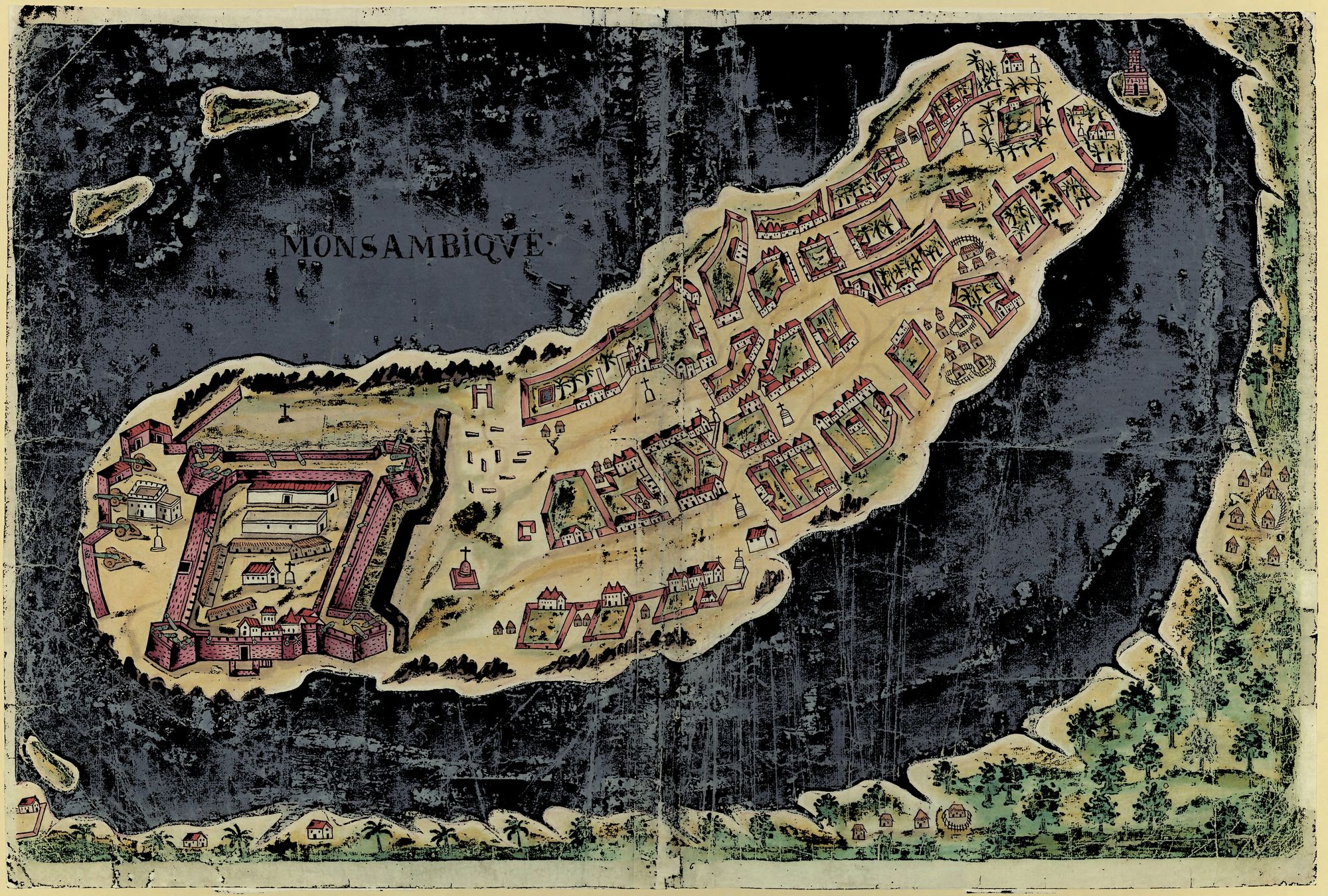
This drawing of the fortress on Mozambique Island was included in the collection prepared by António Bocarro, the official chronicler of the Estado da Índia, in 1635. The fortress depicted was different from the one built in 1507. In 1545, the viceroy João de Castro decided to replace the Torre Velha (Old Tower) and the old bastions on the island with a larger fortress. São Sebastião fort commenced to be built shortly thereafter and was only finalised in 1583, while the great cistern for storing water was not completed until 1605.
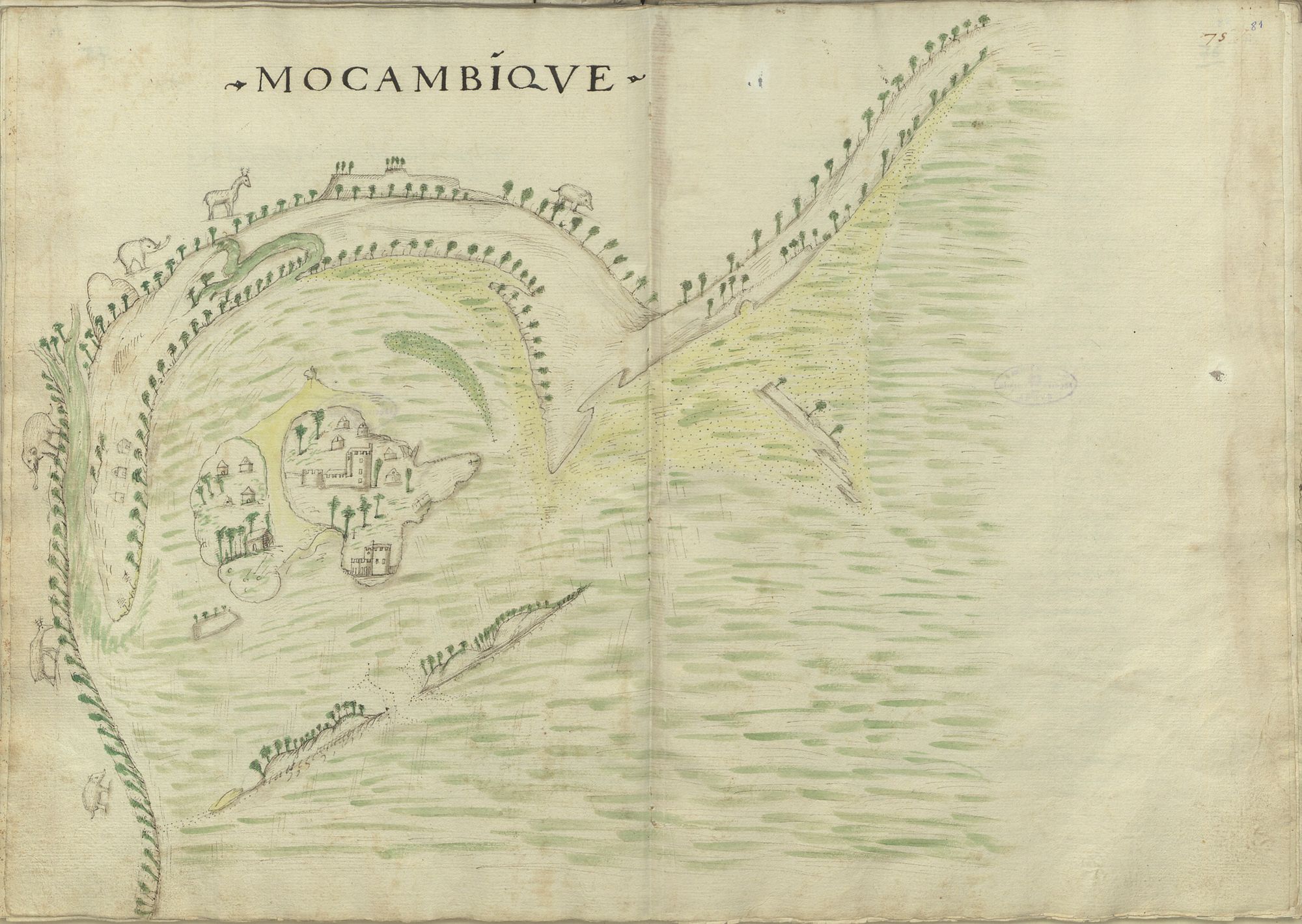
When the fortress of Mozambique Island was built, a house was constructed to shelter the sick. In 1538, a proper hospital was built in its place. João de Barros noted, “There are few cities in the kingdom [of Portugal] where so many deceased Portuguese have been buried.” The high mortality rate in the island can be attributed to two main factors. First, the ships arrived with many sick people on board after a six-month voyage from Portugal. Second, the region was plagued by endemic malarial and bilious fevers. Unlike in America, the Portuguese suffered more from African diseases than the Africans did from European ones.
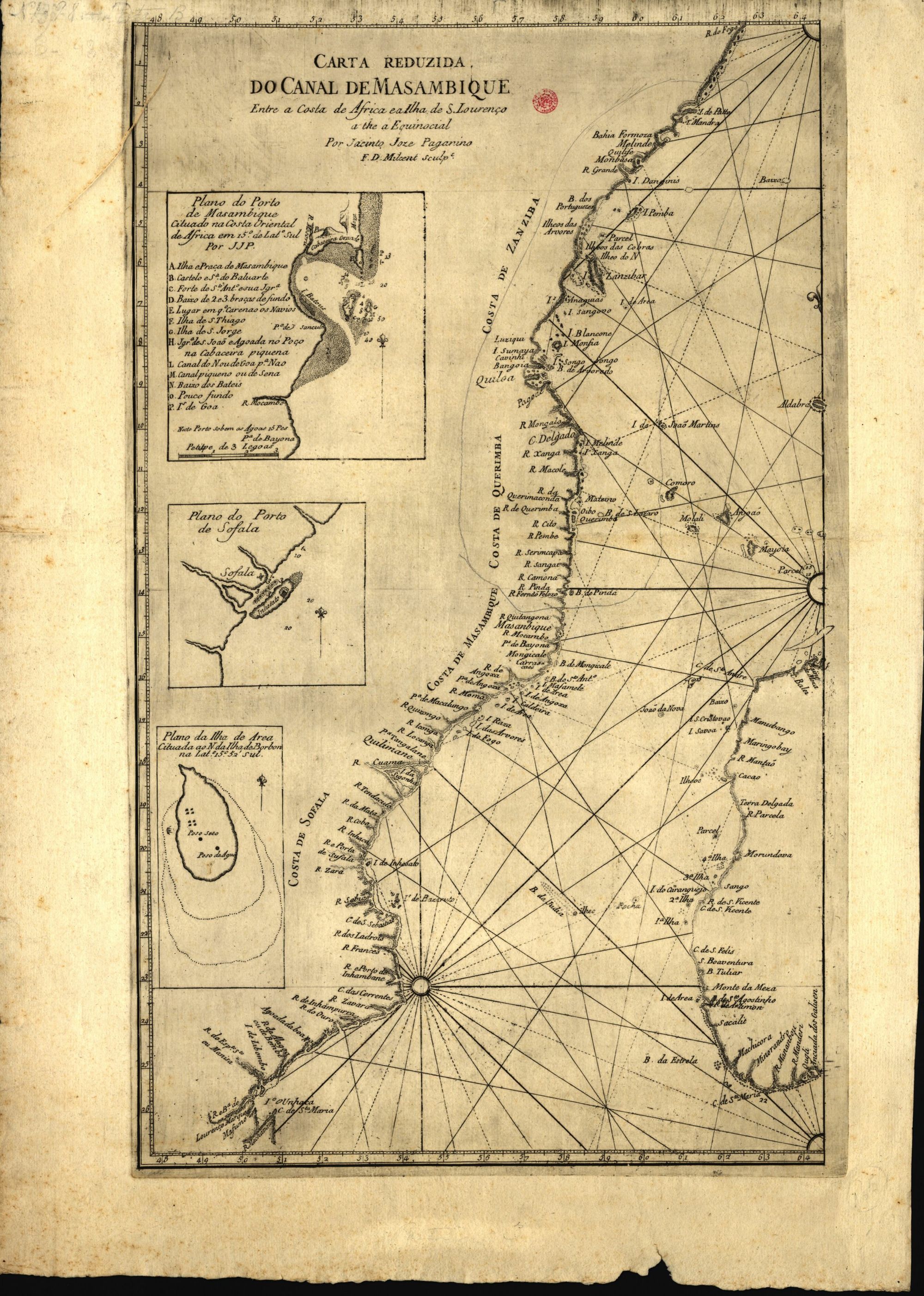
In Mozambique, the Portuguese dwellers, many mestizos, lived mainly by trade and maintained a network that linked them to the mainland – where they bought ivory and had their farms – and to the dwellers in the Querimba Islands and to the Comoro Islands and Madagascar – where they purchased food supplies and goods from naval stores. Their mainland farms (fazendas) were maintained by enslaved people bought from Makua chiefs of the interior.
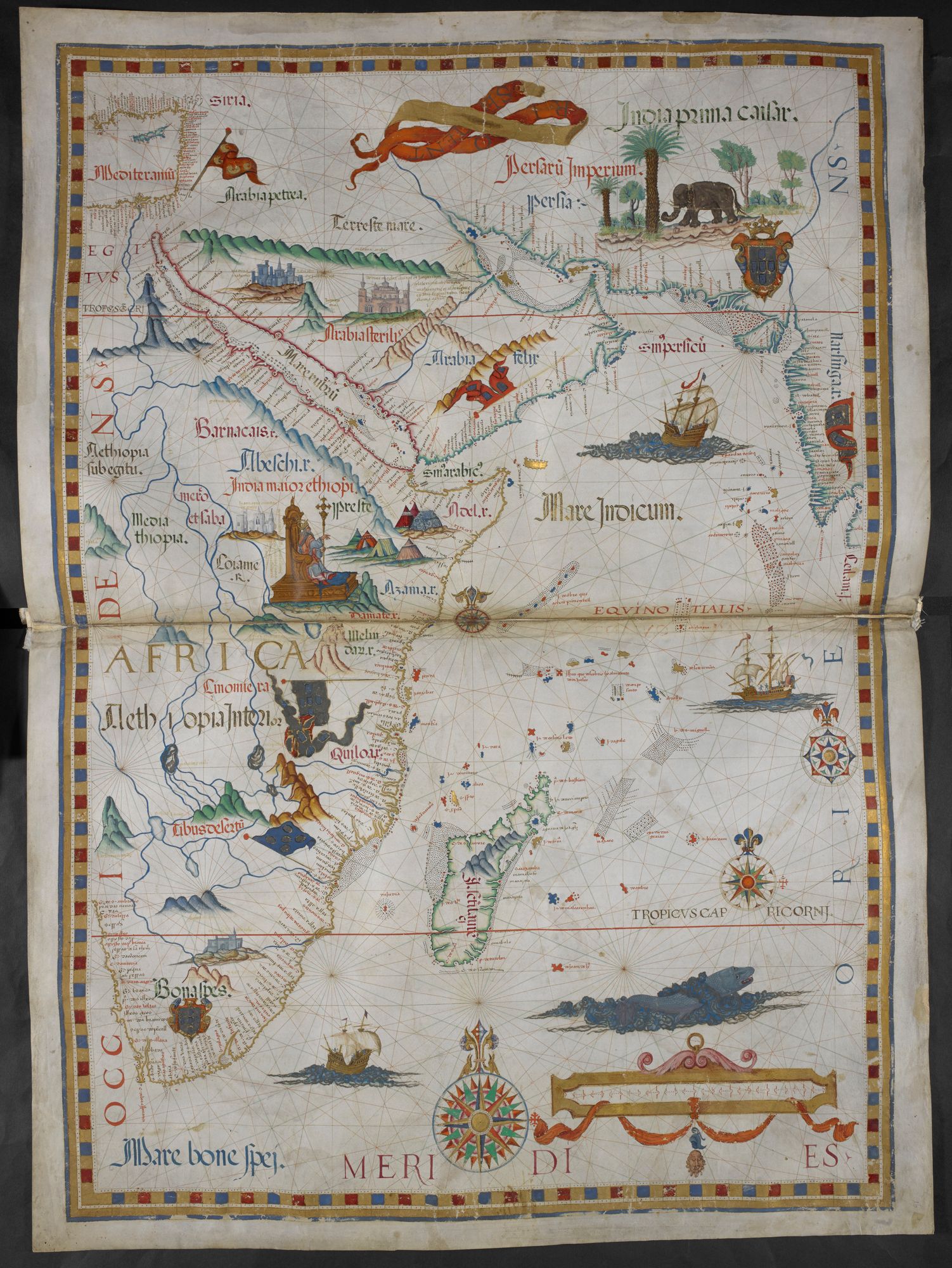
The principal aim of the Portuguese in Asia was to monopolise the spice trade, undercutting the Mediterranean route. Yet, since they did not control production, they had to buy the spices themselves. They traded it for the African gold and ivory acquired in exchange for beads and cloths from Gujarat. Despite the efforts, the Portuguese could never control the gold mines in Africa, mainly because the activity was too dispersed. Trade with India was carried out mainly through the Goa-Mozambique voyage and the goods warehoused on the island.
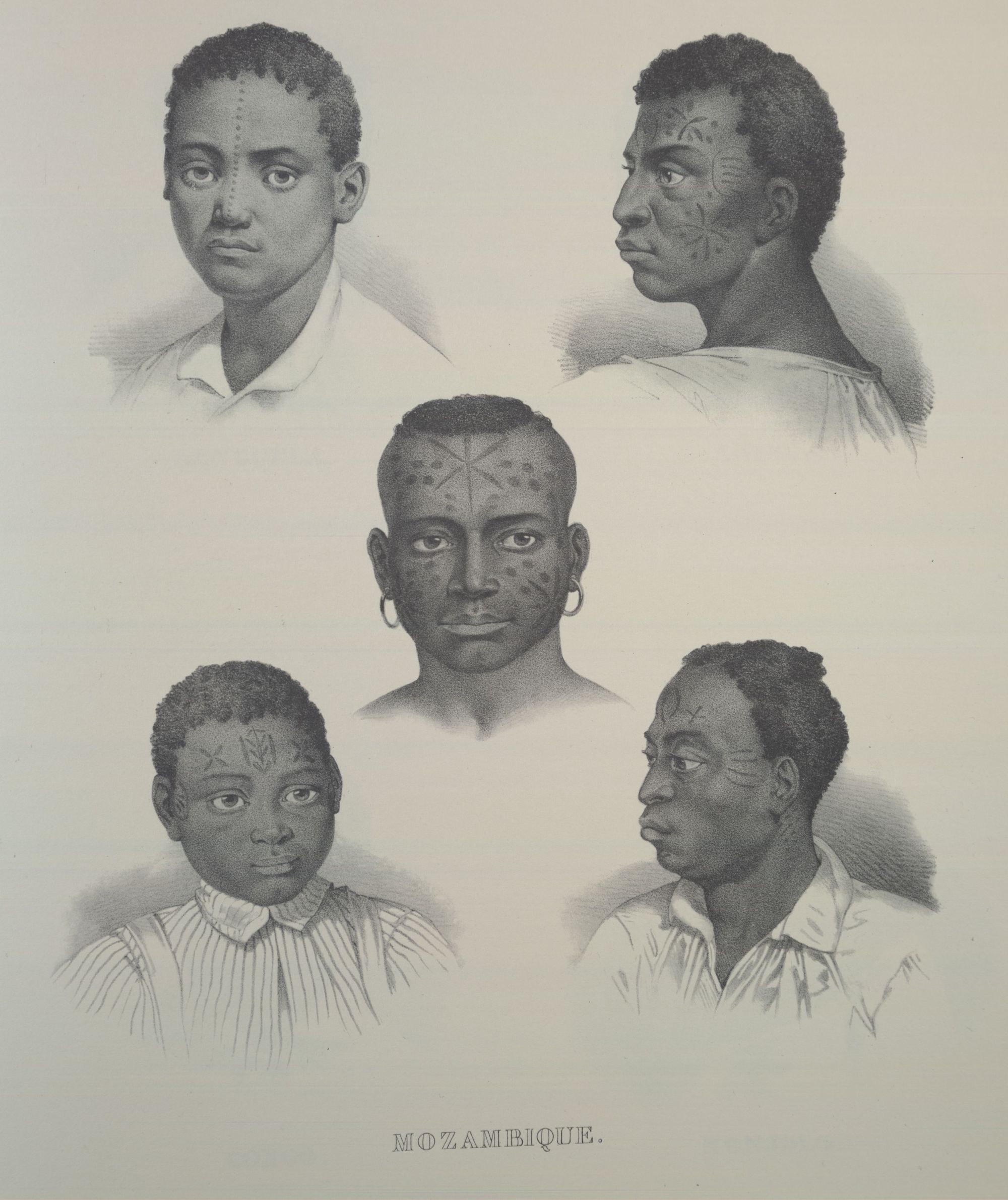
Mozambique was also an important outlet for the slave trade. Although the slave export trade did not fully develop until the late eighteenth century, the Portuguese had been using them locally for porterage, as militia, and as concubines. Brazil imported enslaved people from Mozambique for a brief period in the seventeenth century, but the large-scale trade began in the late eighteenth. By this time, the French had already begun purchasing them from Mozambique, first through smugglers and later legally. In the nineteenth century, the main economic activity of northern Mozambique shifted from exporting ivory, gold and silver to enlaved people.
References:
Boxer, Charles Ralph. ‘The Principal Ports of Call in the Carreira Da Índia’. Luso-Brazilian Review 8, no. 1 (1971): 3–29.
Hespanha, António Manuel. Filhos Da Terra: Identidades Mestiças Nos Confins Da Expansão Portuguesa. 1a. edição. Lisboa: Tinta da China, 2019.
Machado, Pedro. ‘A Forgotten Corner of the Indian Ocean: Gujarati Merchants, Portuguese India and the Mozambique Slave-Trade, c .1730–1830’. Slavery & Abolition 24, no. 2 (August 2003): 17–32.
Newitt, Malyn. ‘Mozambique Island: The Rise and Decline of an East African Coastal City, 1500-1700’. Portuguese Studies 20, no. 1 (2004): 21–37.
Pearson, M. N. Port Cities and Intruders: The Swahili Coast, India, and Portugal in the Early Modern Era. Baltimore, Md.: Johns Hopkins University Press, 1998.
Credit for the featured image: https://commons.wikimedia.org/wiki/File:1598_Mosambique_Kaerius.jpg
